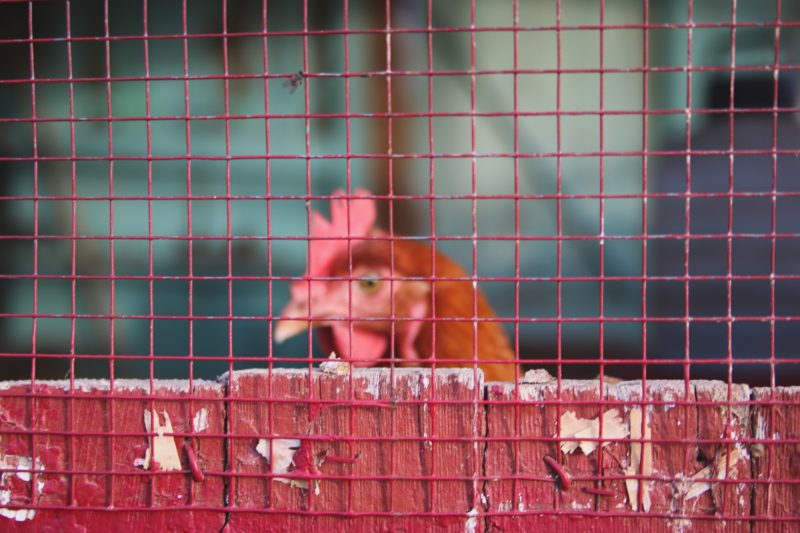As a vegan and a long-time vegetarian, I’ve lost count of the number of times friends have said to me “Oh, but I hardly eat meat at all now! Just a bit of chicken; I never eat red meat.” The crazy thing is, I wish it were the other way around. Compared to chickens, organic beef cattle have a pretty good time of it, able to live relatively long lives, healthy, grazing freely, feeling the sun on their backs and breeze on their skin. On the other hand, the majority of the chickens we eat are trapped in what can only be described as a living hell.
Many readers will know that I’m studying for an MSc in Animal Welfare. So far the part of the course that has hit me hardest isn’t the week where we heard about pet cats being microwaved for kicks, or rhinos being murdered for their horns, or circus animals enduring lifetimes of abuse for our entertainment (although all these things choke me up too). Actually, the section of the course that still keeps me awake at night is poultry farming.
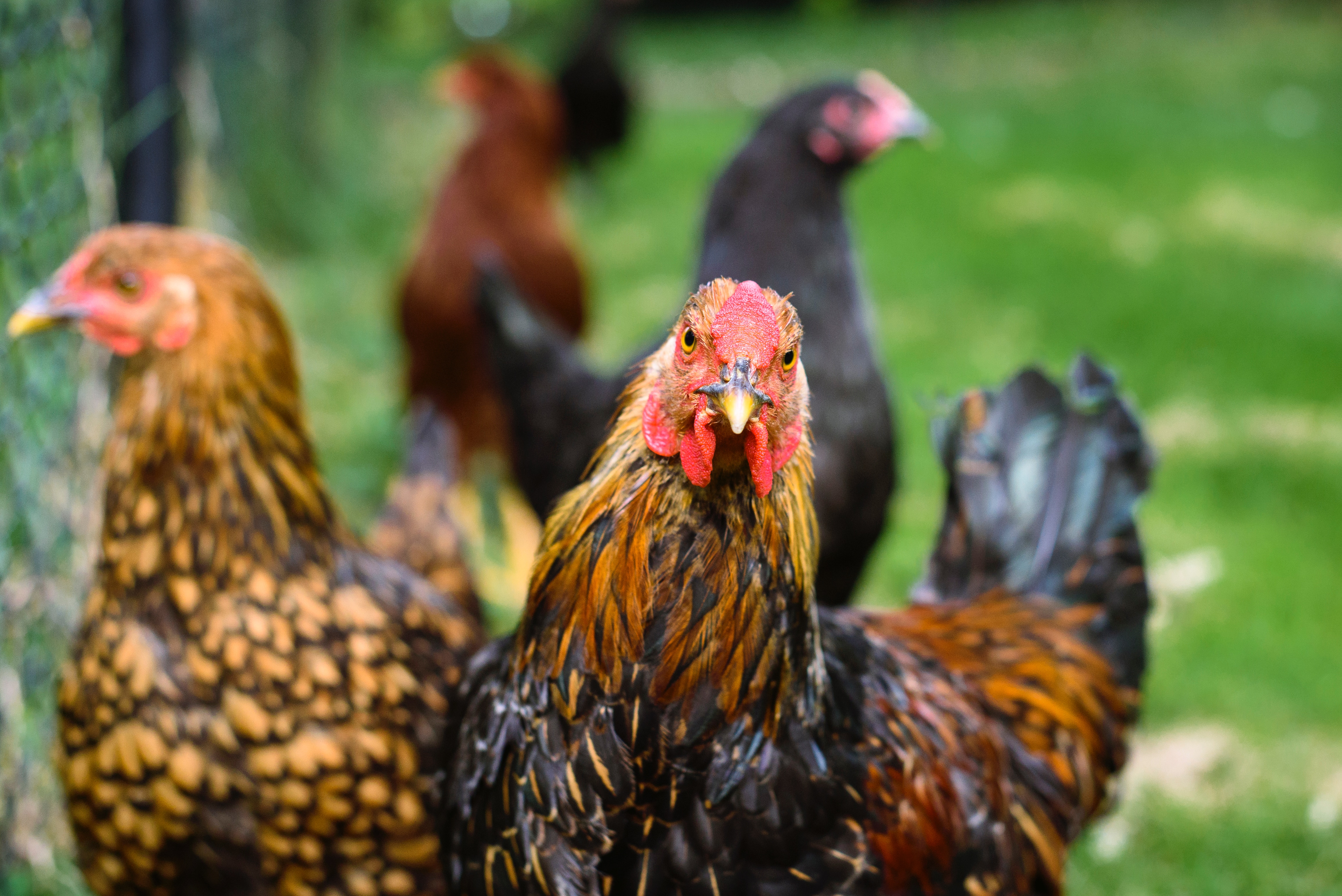
Chicken tonight?
Globally, there are 50 billion chickens are reared in farms each year. Over 70 per cent of chickens raised for meat are raised in intensive industrial farming systems, which includes the majority of chickens in the UK, Europe and America. Yes, here in the UK, generally thought to be a leader in animal welfare, less than half of our chickens are free range. Of the 7 billion chickens reared for meat in Europe each year, 90 per cent are intensively farmed.
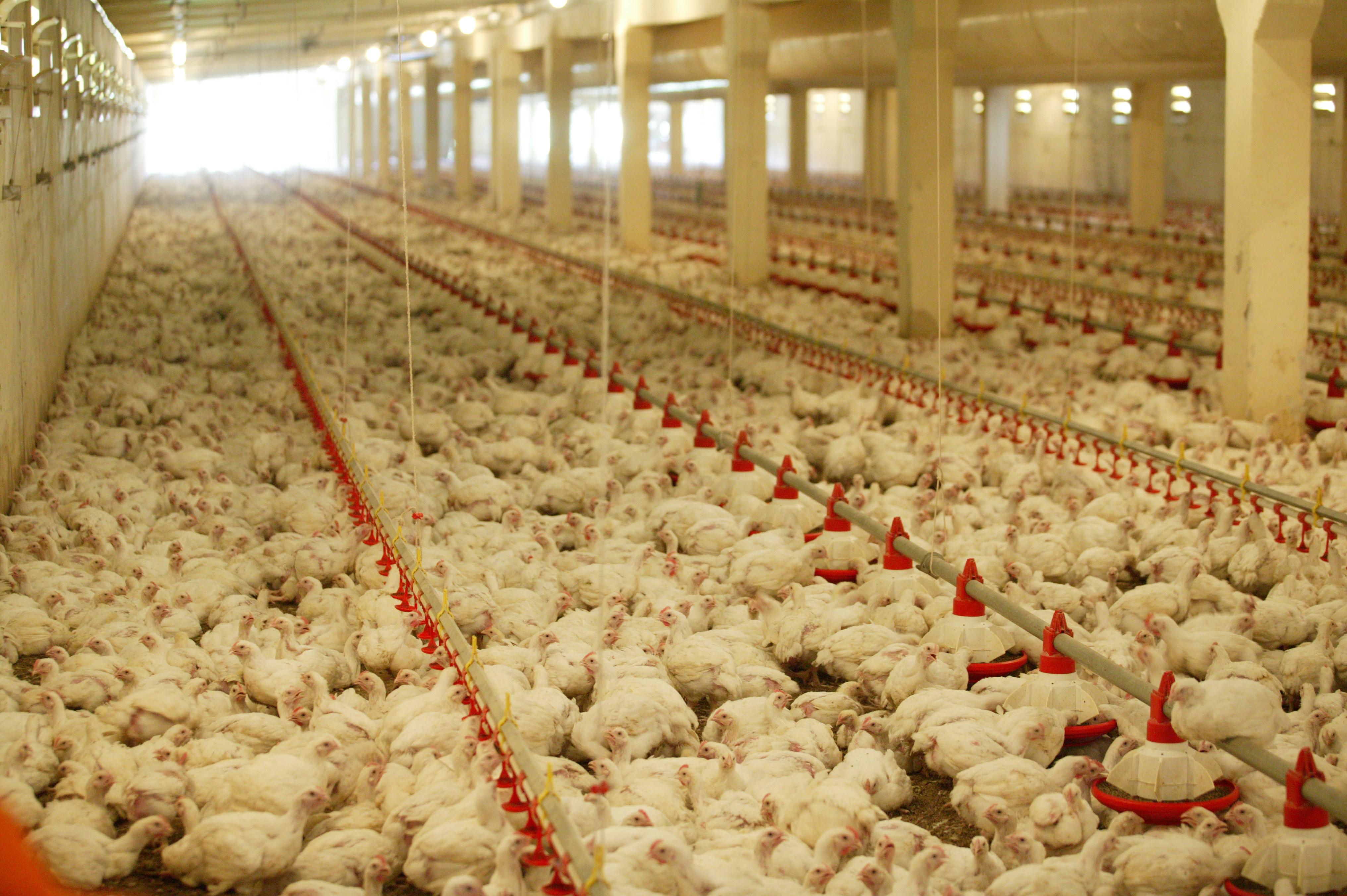
American ‘cage-free’ poultry farm
But who cares about chickens? They’re stupid birds: they’re not charismatic, cute or cuddly, they have little beady eyes; hell, they’re barely sentient. Actually, this couldn’t be further from the truth. Chickens are extremely intelligent, having a sense of object permanence from about two days old, something that only begins to develop in human children at 6-7 months (object permanence is the fairly sophisticated understanding that an object still exists when it is taken away or hidden). Turkeys are maternal, carrying their young chicks on their backs, and hens have even been known to use special ‘names’ for humans they know (in A Kid’s Guide to Keeping Chickens Melissa Caughey describes how her chickens consistently called her with the same sequence of sounds). I recently stumbled across this wonderful short video of a rescued chicken greeting his human friend. In her recent bestseller on the ‘secret lives’ of her organic farmyard animals, Rosamund Young says of her hens: “They enjoy everything, sing happy little songs and just have fun. From the moment they are let out in the morning they embark on adventures.” She tells a moving story of how two of her hens lovingly cared for a third injured bird, comforting her by “gently moving their beaks up and down hers.” When the injured hen finally died, for over two weeks her companions grieved: they congregated in their deceased friend’s corner of the pen, shied away from human contact and barely ate.
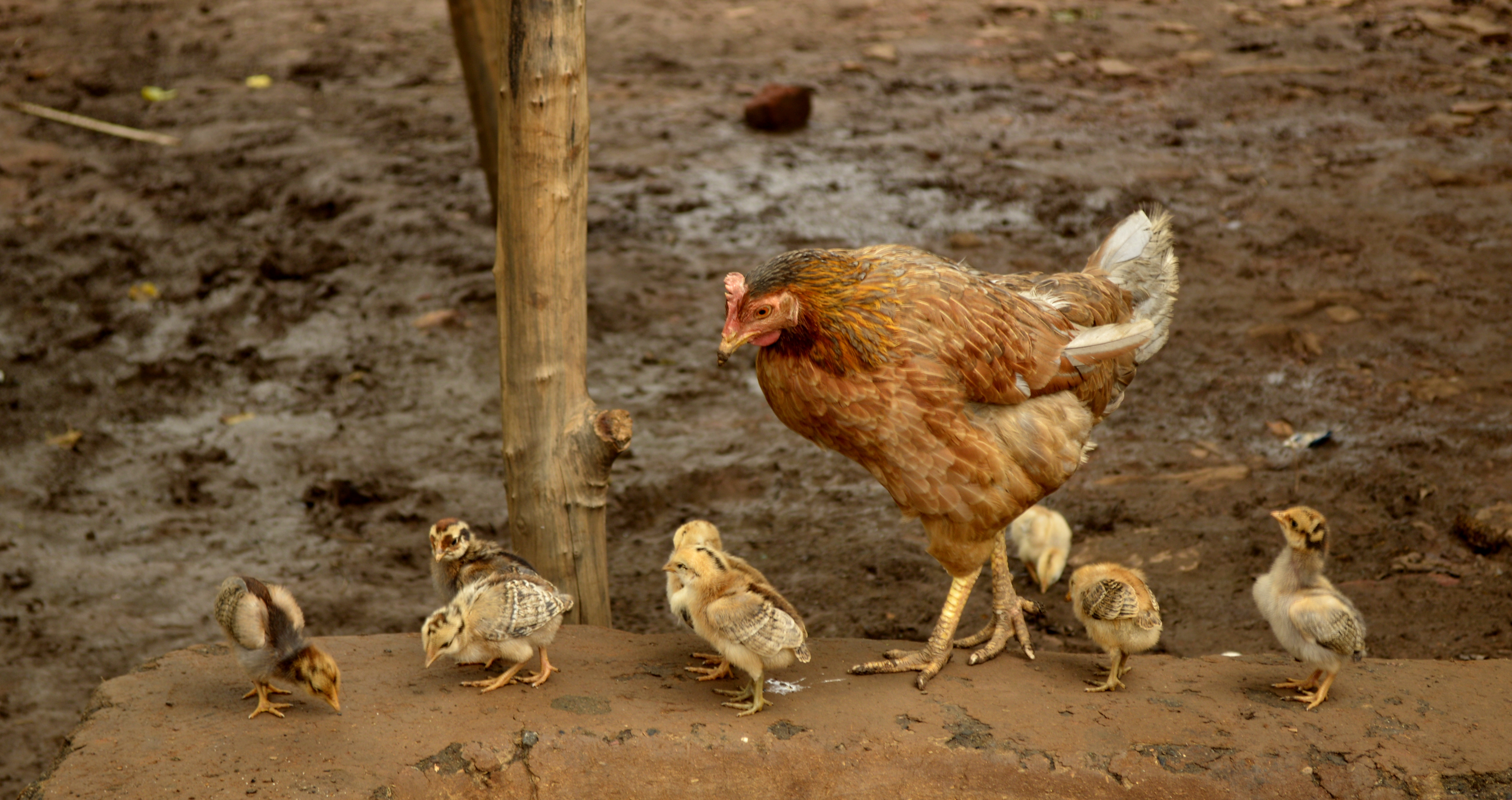
Chickens are maternal animals
Chickens can very obviously suffer, physically and emotionally. Neuroscientist Jaak Panksepp (famous for tickling rats to make them laugh) describes evidence that chickens have ‘sadness systems’, just like we do. And there is no doubt that our modern-day chickens are sad, sad animals. To give just one example: when hens are ready to lay their eggs, they have a strong desire to retire somewhere isolated to nest. This natural behaviour has been proven to be more important to a hen than eating food after 72 hours of starvation (Follensbee, 1992). In battery farms, hens can’t do this because they’re trapped in tiny cages: the psychological agony the hen goes through as a result is described as “torture” by psychologist Konrad Lorenz.
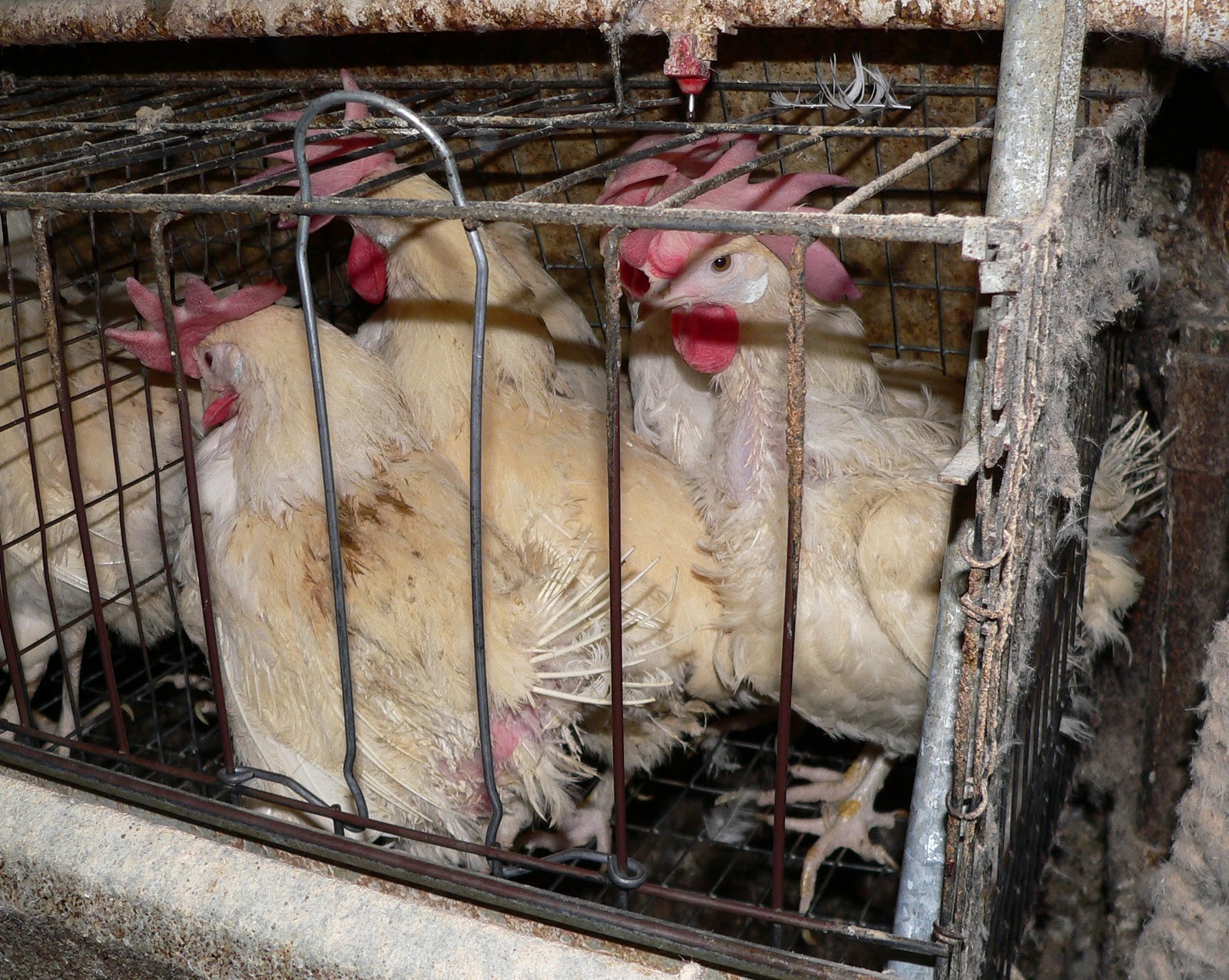
Caged hens in America
In America, 90 per cent of eggs come from caged chicken systems, where the United Egg Producers recommend that each bird gets 67 square inches of cage space (the size of an iPad). These hens are unable to fully extend their wings, forage, preen or dustbathe (given space, a chicken can run up to 9mph). In her tiny cage, the hen clings 24 hours a day, every day, to wire floors, causing her feet to weaken and her toe pads to thicken, leading to a near constant state of pain. In American ‘cage-free’ environments there are similar numbers of hens: they’re free to roam around but the majority of these ‘free range’ chickens still don’t have access to the outdoors. To prevent feather pecking, even in Certified Organic and Certified Humane systems, chicks have part of their beaks cut off without anaesthetic (now illegal in the UK). Forced molting is induced by stressing the hens, depriving them of sleep or restricting food, which stimulates them to produce larger eggs quicker (also illegal in the UK and Europe). It’s also worth mentioning, in case anybody’s thinking of buying chicken in America any time soon, that humane slaughter law doesn’t apply to chickens there. If you want to know what this means, you can read more here (I won’t put you through that in this post!)
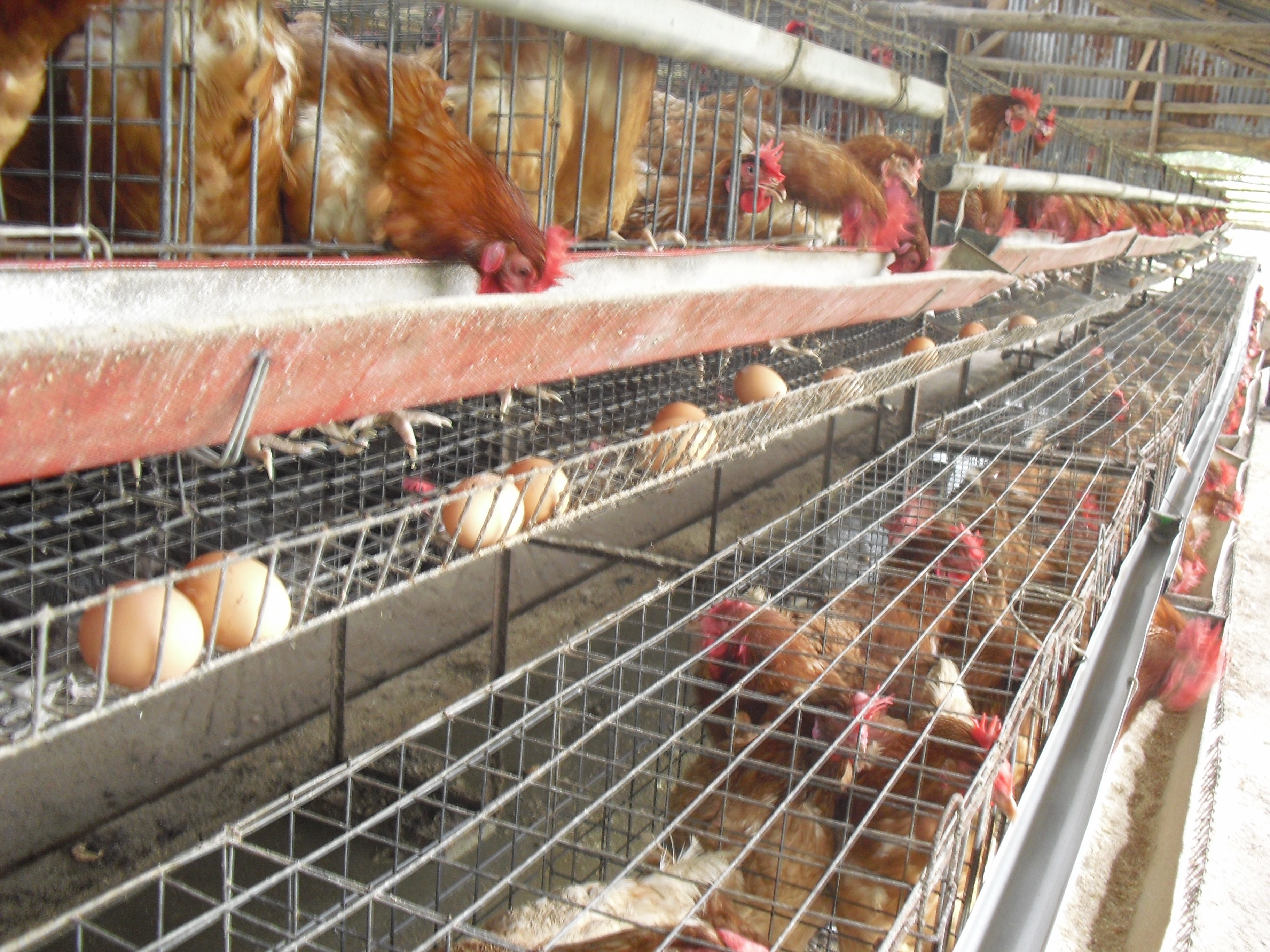
Battery-farmed hens
Here in the UK “only” 50 per cent of eggs come from battery hens and we use so-called “enriched” cages, developed when barren battery cages were banned in the EU. Yet these only provide a small amount of extra space per bird and the design of the cages means their natural behaviours are still very restricted. The perches are low so hens can’t fly up high away from feather pecking and the ‘nest’ area consists of a plastic sheets hanging down from the top of the cage. About once a year, the entire population is slaughtered and replaced.
So what can we do to buy out of these systems of suffering? Obviously, check the label on your carton and the code on the eggs themselves: choose free range eggs, which is a much better guarantee of good welfare in the UK than in America. Here hens are housed in barns or aviaries but they also have constant daytime access to an outside range, with vegetation, and each hen must have at least 4 square metres of outside space. I think most readers will already be paying a little extra to make sure their eggs are free range but it’s definitely worth considering going further and buying Soil Association-labelled organic. And bear in mind that things like quiche, cake and mayo contain egg, which is probably from caged hens unless the ingredients specify otherwise: Compassion in World Farming have an excellent guide here.
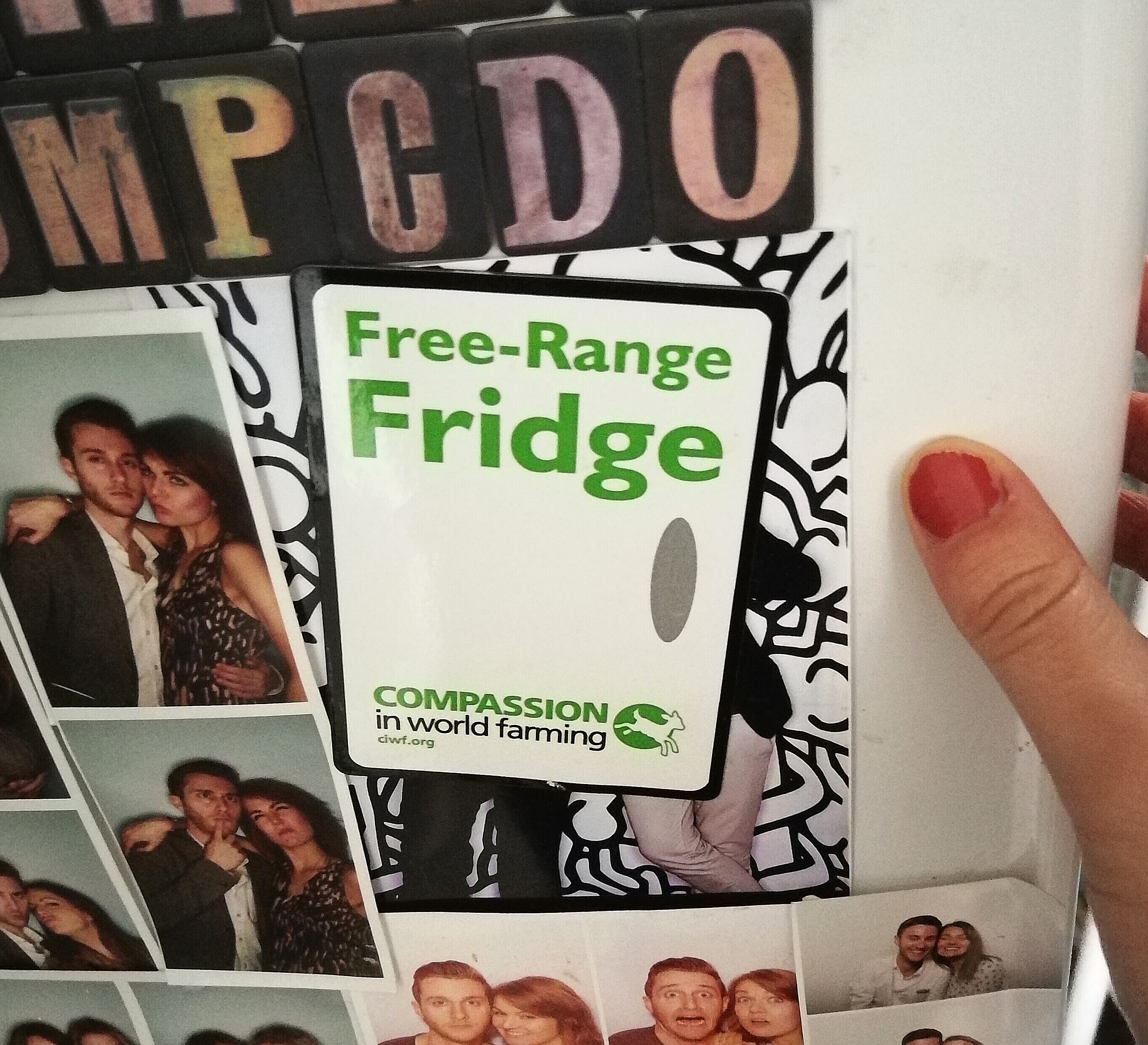
Striving for a cruelty-free kitchen
Of course, even free range operations rely on chicks from commercial hatcheries where billions of male chicks are literally ground up alive because there’s no need for them. The meat chickens we keep are genetically adapted to grow fast and fat, so male ‘egg chickens’ are useless for meat. The horrible reality of farming industry is that everything is dictated by cost: it’s cheaper to kill these surplus male chicks and raise another broiler chicken entirely for that purpose. It’s also more expensive to buy carbon monoxide gas than it is to operate an electric macerator, so the latter is the most common means of execution in America (and actually, the gas used to kill most UK chicks offers a slower, more painful death). The only way to ensure that yours are ‘good eggs’ is to buy from small local farms where you know the fate of their male hatchlings, or even keep backyard chickens yourself. Charities like the British Hen Welfare Trust re-home commercial laying hens, offering them a free range retirement.
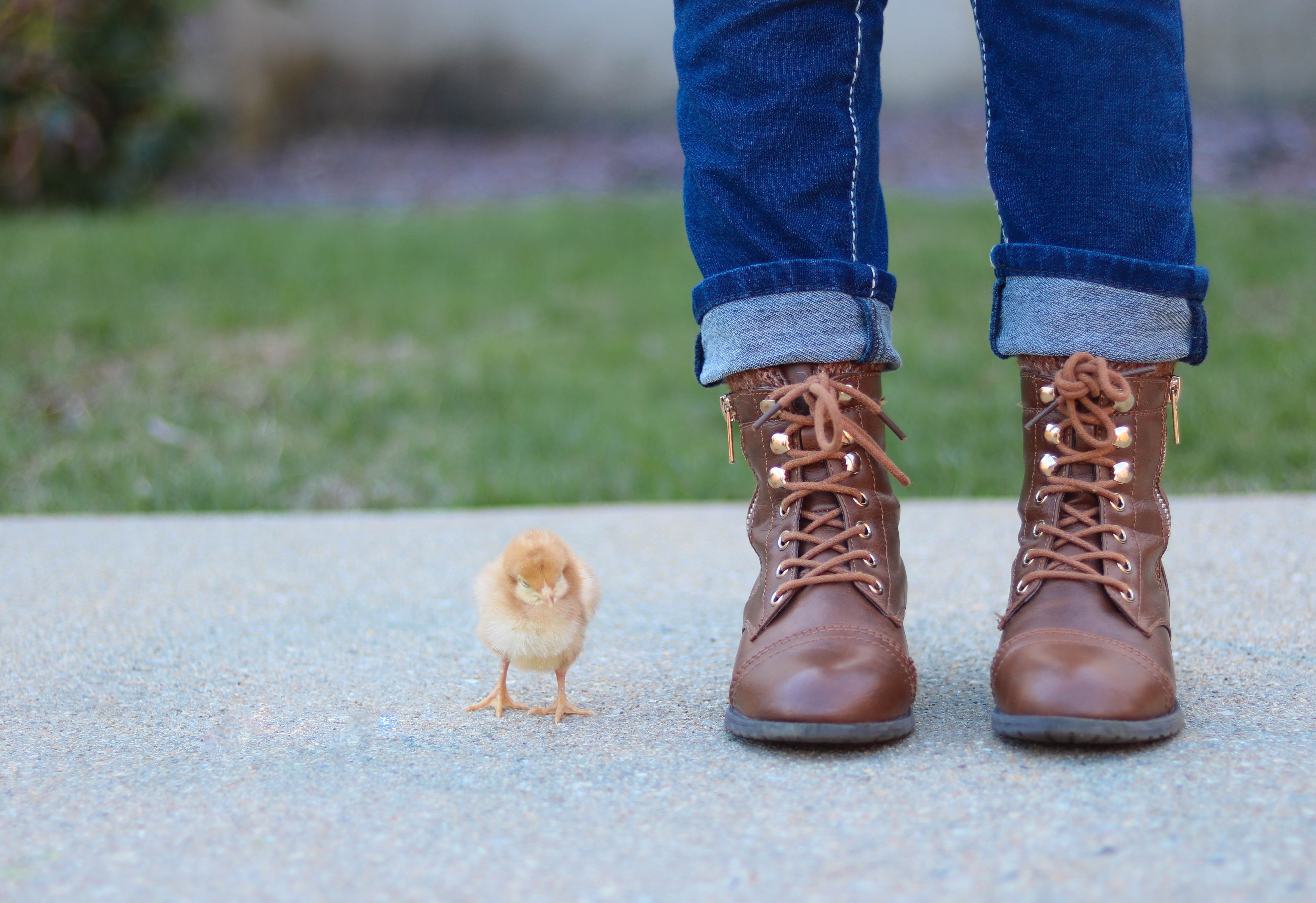
A ‘useless byproduct’ of the egg industry
Let’s go back to that idea of growing ‘fat and fast’. Factory-farmed chickens and turkeys are the products of intensive genetic selection, growth-promoting antibiotics and additives, which means they gain weight rapidly with minimal food. Constant artificial light in these indoor, airless systems also encourages birds to eat more. A 5lb chicken would take 84 days to raise in the 1950s; today, this time period has been almost halved. These poor birds have been bred to grow so quickly that often their legs collapse under the weight of their ballooning bodies. If a chicken’s legs do break, he can’t reach food or water and slowly starves to death on the barn floor. The stench of ammonia in these sheds is suffocating and antibiotics are routinely overused to help chickens survive.
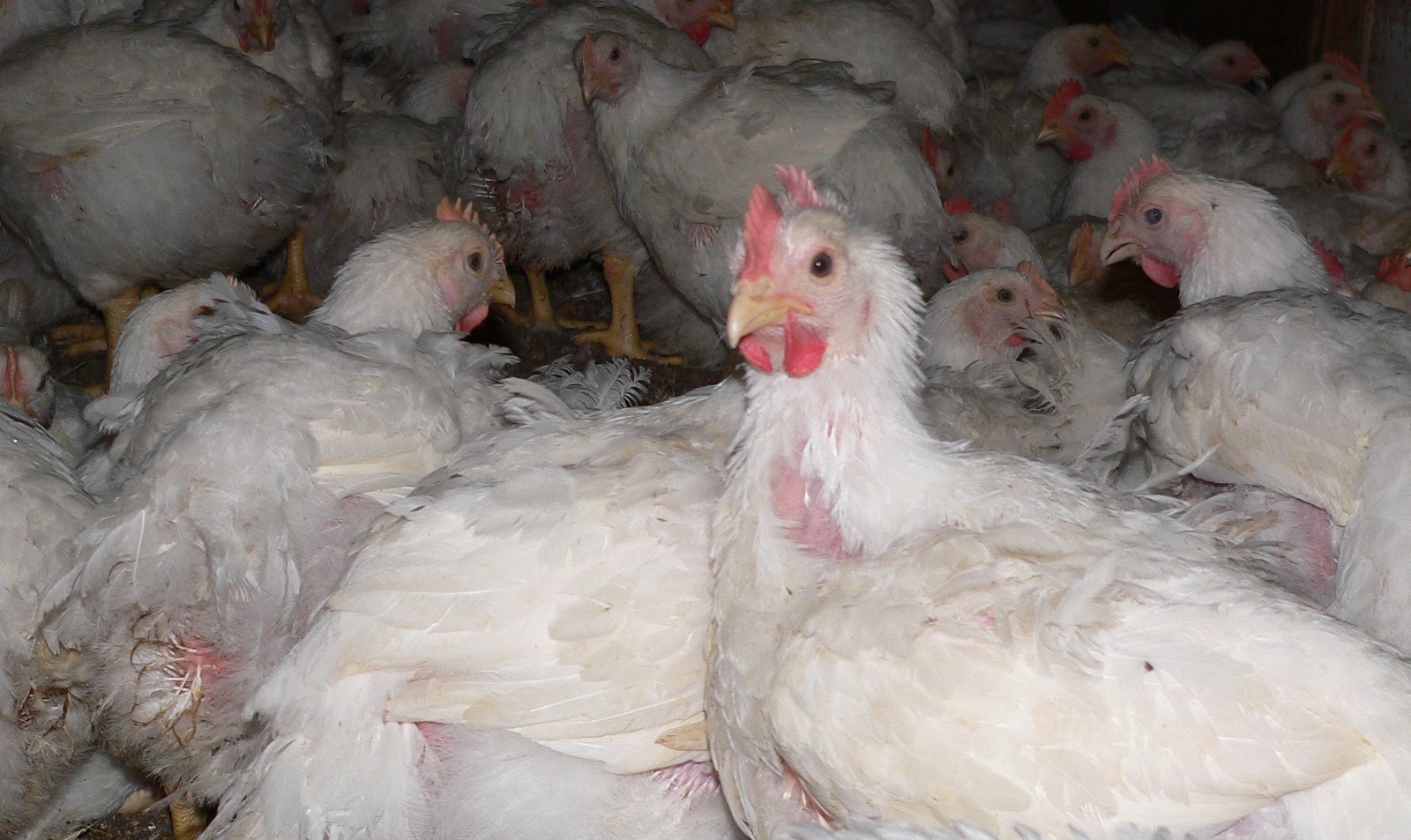
Cage-free broiler chickens in America
Because of course these chickens are sick and in pain: their hearts and lungs can’t support their rapid growth and almost 30 per cent have gait defects that impair their walking ability. Remember that statistic at the start of this blog? We’re talking about 90 per cent of meat birds in Europe. In his book Animal Welfare: A Cool Eye Towards Eden, veterinarian John Webster summarises:
“On the balance of this evidence, we must conclude that approximately one quarter of the heavy strains of broiler chickens and turkeys are in chronic pain for approximately one third of their lives… This must constitute, in both magnitude and severity, the single most severe, systematic example of man’s inhumanity to another sentient creature.” (p.156)
Can you imagine being in agonizing pain for a third of your life? Inhumane doesn’t begin to cover it. Breeding broilers are similarly genetically engineered to grow fast and desire enormous amounts of food, but they have to be kept slimmer so they live longer. This means they’re kept perpetually hungry. It’s hard to fathom that this is a situation that we, human beings, have deliberately created and continue to perpetuate. That we are capable of this level of disregard for the life of a living creature. As Karen Davis, founding editor of United Poultry Concerns (UPC), states:
I think chickens are in hell and they are not going to get out. They already are in hell and there are just going to be more of them. As long as people want billions of eggs and millions of pounds of flesh, how can all these animal products be delivered to the millions? There will be crowding and cruelty – it is just built into the situation. You can’t get away from it. And we are ingesting their misery.
Ingesting their misery. This is why I feel sick when I see KFC adverts and desperately sad at Christmas and Thanksgiving. Every single one of those 50 billion birds is a living, thinking, feeling being, and 70 per cent of them are suffering without hope of salvation. Isn’t it time to address the moral consequences of our chicken habit?
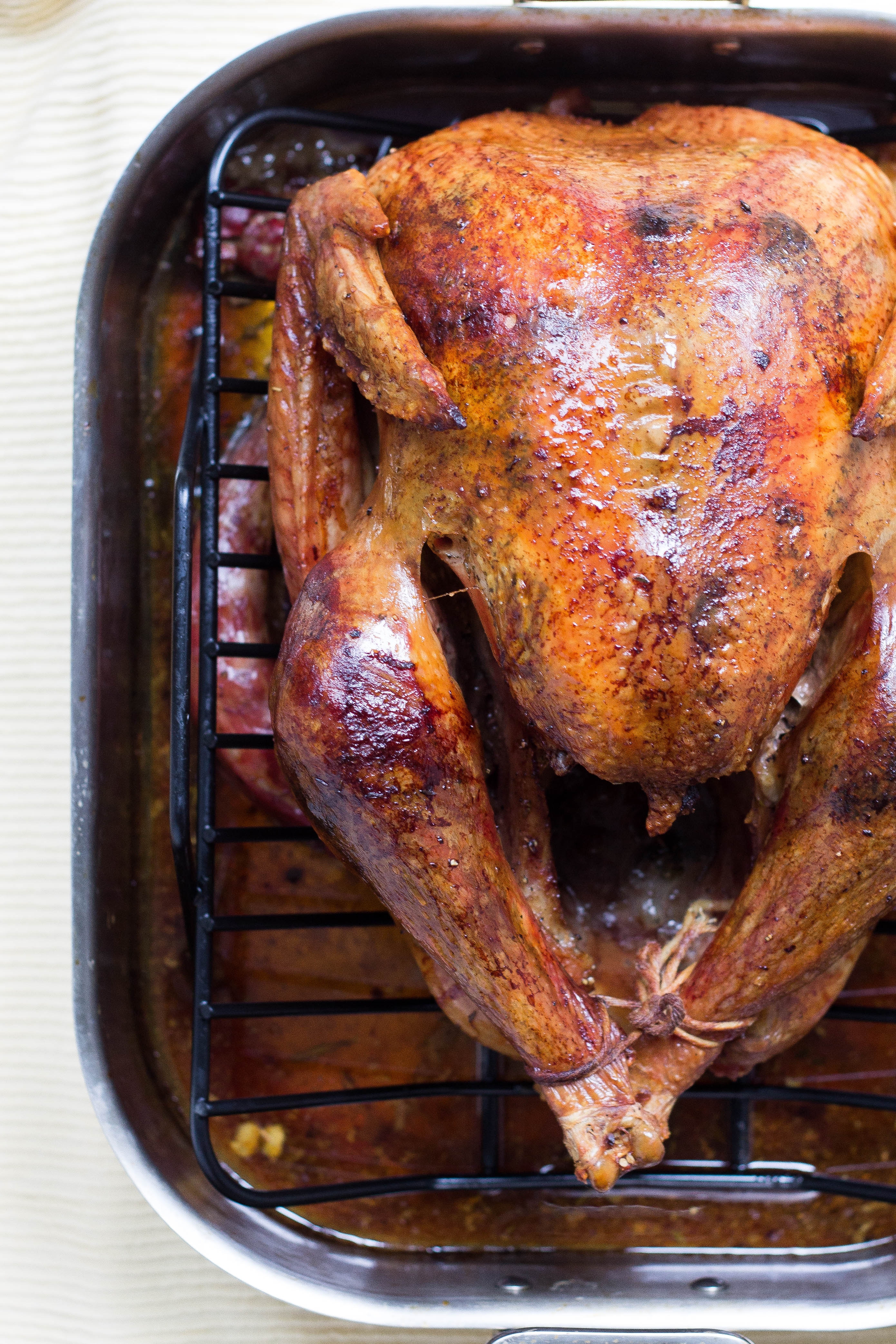
Be mindful of the origins of your Sunday roast
If you agree and you don’t want to endorse these intensive systems, you can make informed, compassionate food choices. Buying free range chicken and turkeys in the UK ensures they have access to the outdoors or are given more space in their shed. Better still, only buy chicken and eggs with the Soil Association, RSPCA FF Free-Range and SOPA labels. It’s not just about what we cook at home either; avoid chicken in fast food outlets or kebab shops, and when you’re eating out don’t be afraid to look like a dick and ask if the chicken on your plate or in your sandwich is free range. The more people who ask for high welfare meat, the more likely restaurants are to choose conscientious suppliers.
Where products are from higher welfare systems, such as free range or organic, it is almost always written on the label: by contrast, standard intensive production is not. As a rule, if there’s no label, an animal has most likely suffered to create that product. You can read more about the different quality assurance schemes here.
Buying free range and organic will undoubtedly help the welfare of our chickens. However, few people would opt to kill a living chicken (however its life has been) if they had a choice not to. So why make a different choice in the supermarket aisle, just because somebody else has killed the chicken for you? While making good, ethical choices about which poultry you buy is great, not buying it at all must be even better. Because, put simply, if we can live happy, healthy lives without harming other sentient beings, why wouldn’t we?
